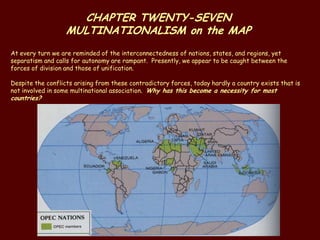This document discusses the rise of multinational organizations and supranationalism. It begins by noting the increasing interconnectedness of nations yet prevalence of separatist movements. Most countries now participate in multinational associations due to necessity. The document then examines several major multinational organizations throughout history, including the League of Nations, United Nations, European Union, and NATO. It explores their goals, structures, successes, and ongoing challenges in fostering international cooperation and security.




















